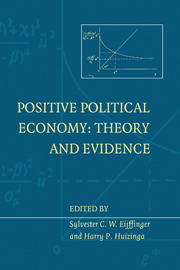Book contents
- Frontmatter
- Contents
- List of figures
- List of tables
- List of contributors
- Foreword
- Introduction
- I Monetary institutions and policy
- II Exchange rate policy and redistribution
- 7 Exchange rate anchors and inflation: a political economy approach
- 8 Why capital controls? Theory and evidence
- 9 The political economy of the Exchange Rate Mechanism
- Comment
- 10 Unemployment benefits and redistributive taxation in the presence of labor quality externalities
- Index
Comment
from 9 - The political economy of the Exchange Rate Mechanism
Published online by Cambridge University Press: 05 September 2013
- Frontmatter
- Contents
- List of figures
- List of tables
- List of contributors
- Foreword
- Introduction
- I Monetary institutions and policy
- II Exchange rate policy and redistribution
- 7 Exchange rate anchors and inflation: a political economy approach
- 8 Why capital controls? Theory and evidence
- 9 The political economy of the Exchange Rate Mechanism
- Comment
- 10 Unemployment benefits and redistributive taxation in the presence of labor quality externalities
- Index
Summary
Professor Minford's interesting and impressive theoretical chapter deals with the consequences of an anti-inflation commitment of the ERM-countries by tying their currencies to the Deutschmark as an anchor currency. In this way these countries are accepting the Deutschmark-external discipline with the associated credibility effects, preventing a time-inconsistent monetary policy behavior.
I agree with what Minford states in his chapter and I will just focus on some key issues, and try to elaborate a little more on some of these key points. He states that a prevailing overvaluation of the currency and the need for subsidies among countries pegging to the Deutschmark, are caused by the fact that those countries are faced with a lack of credibility or have not completely “tied their hands.” This credibility is imperfect because there always exists the possibility that a country can change the exchange rate. Specifically, this may occur when the rate of inflation rises above the inflation in the anchor-country and the high-inflation country is not prepared to accept the negative real effects of the associated rise in the real exchange rate. According to the stylized model, this implies that the government is not willing to accept the resulting downward deviation of the actual rate of traded goods output from its natural level.
Therefore a devaluation possibility may be the reaction of policy makers in the high-inflation country to shift the needed internal adjustments with regard to income and fiscal policy to the sound, and lower-inflation countries.
- Type
- Chapter
- Information
- Positive Political EconomyTheory and Evidence, pp. 265 - 268Publisher: Cambridge University PressPrint publication year: 1998



